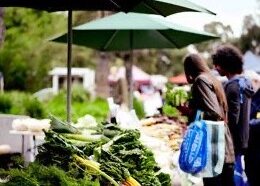A community food hub for Moreland’s north
Moreland Council is investigating how a community food hub would help alleviate food insecurity in Moreland’s north. Open Food Network and Fair Share Fare are undertaking that work for council.
COVID19 has significantly changed the community consultation process for this project, and numerous attempts to hold this next round of consultation have been changed by lockdowns etc. As a reminder, earlier this year we spoke to many community members through individual interviews and drop-in sessions. We then took that input and refined it into some draft concepts of what a community food hub could look like.
We would now like your input to refine these concepts, and to hear if anything has changed due to COVID19. Below we have outlined the concepts, and the points we would like your feedback on.

Priorities identified by the community prior to COVID19
- Community resilience
- Education and skills
- Sustainability
- Affordability
- A place for community interaction, engagement and learning
- Friendly – while purchasing, chat etc
- Events and workshops
- Particularly food-based: how to grow, process and cook; other cultures;
- More broadly, e.g. arts or cultural festivals
- Spaces for use for community groups
- Meetings and events
- Kitchens
- Gardens and relaxation
- Good coffee and cakes!
What type of food experience people wanted
- Most individual response specified weekly shop as desirable
- Access in very local area, walk, bike or PT – some said they would drive and suggested adequate parking is important
- Diverse, fresh, seasonal produce
- Cultural diversity in what’s available
- Bulk foods that I can pack myself, or attention to minimise / reuse packaging
- Halal, meat / dairy / eggs, vegan – all got a mention, no clear
- Local – produced within farm, gardens, community and from local source-identified growers
Three possible food hub models
Option 1: Hub and spokes
One main warehousing hub, supporting a network of community food access sites, which could be shopfronts, community centres etc. Coordinated access to fresh, quality and sustainable food, with storage, refrigeration and warehousing capabilities could underpin a network of diverse community food access options.
Numerous community food enterprises on the frontline of providing food (including selling food) face significant challenges with sourcing produce regularly, storing it, refrigerated infrastructure, and more.
Rather than providing each individual enterprise with support to scale up, a single backend hub would meet the most challenging logistics needs, while continuing to enable community food enterprises to engage with their communities in existing formats and venues, and to expand their reach in response to the local needs and opportunities that they perceive.
The key features of a warehouse scale hub would be:
- To facilitate truck access, allowing enterprises to collaborate and purchase at a scale that reduces some costs
- To enable storage of produce – not necessarily for long periods, but enterprises identified that even being able to store fresh produce overnight would allow them to scale up operations
- To facilitate packing – many enterprises wanted to efficiently pack produce (e.g. vegie boxes) in a food-safe space that enabled proper manual handling practices (e.g. using waist height packing tables with rollers)
Beyond those key needs, there is also the potential for storage of other equipment used to deliver programs. Depending on the priorities determined by those community food enterprises who opted in to the hub, an additional priority may be a commercial kitchen for meal preparation or small-scale processing and preserving.
The hub would not meet community needs for connection, meeting spaces, or classes, but would enable community food enterprises to deliver those outcomes and activities in a variety of locations and at a range of scales. By using existing community food enterprises as the ‘spokes’ in the model there is the opportunity to cover a broader range of geographical locations and a larger cross section of the community, with more diverse needs and connections.
Assumptions about why this will address food insecurity
Smaller community food enterprises are addressing food insecurity reasonable effectively, but are constrained by infrastructure that limits their ability to expand. Removing that barrier will enable both existing and new community food enterprises to deliver activities that address food insecurity.
Local access is context-specific and can be different for different parts of Moreland. Providing infrastructure that continues to aid, and enables, localised enterprises will have greater impact than attempting to create a centralised solution that also aims to reach community.
Option 2: Two or more community food hubs
Build on existing sites that have activity and potential to develop community food hubs in the area. This could include Fawkner Food Bowls, Wheatsheaf Community Hub (when built), Eco-Justice Hub and perhaps others. A fully fledged community food hub can provide food access as well as community connection activities, education and training opportunities. The connection across their communities – through food – is the main thing people are seeking
There are a number of existing community sites that facilitate elements of a food hub identified as important by the community, such as selling, education, community kitchen access, distribution of food relief, meeting and gathering, food growing, etc. There are also new community hubs in development (e.g. Wheatsheaf) that could expand their remit to include food activities.
In contrast to the previous hub proposal of support for backend logistics and scale, this proposal addresses the ‘front end’ of community connection, education.
Each of these sites could be supported through additional infrastructure and funding to become a more significant community food hub. This would look different in each location – not all would have space for growing food, or any food storage, or a community kitchen – but using the strengths-based approach from the community food asset mapping in combination with lean experiments would reveal focus areas and areas for growth in each location.
Assumptions about why this will address food insecurity
Access to culturally appropriate food is one of the barriers to food security. Growing culturally appropriate food at some of the food hubs has the potential to address this challenge.
Utilisation is one of the other barriers. Overcoming this through education how to grow, store, eat, cook and enjoy food equips people to eat better food with less money.
Access to facilities and education that enable microenterprises create opportunities for income streams, addressing the root cause of some food insecurity.
People said they felt less likely to experience food insecurity when part of a strong community network. There was a strong desire to build connections as part of the food hub so that they could address food insecurity through community connections, rather than formal food provision/relief. This solution could address food insecurity from that perspective.
Paving the way for future options
There is a future option that may manage to combine these two options above and more. There was certainly community appetite for a hub that combined both the significant warehousing and logistics of the first option with the community connections and activities of the second. But there doesn’t appear to be community capacity to currently run something of that scale. There is also evidence that the most successful and effective food hubs in Australia are driven by passionate locals committed to seeing their enterprise thrive.
Attempts to start food hubs from external organisations without community buy-in or passionate ‘unstoppable’ founders are yet to succeed in Australia, and usually falter when the first large tranche of funding is finished. If a larger-scale community food hub that combined higher volume logistics and community activities is Council’s aim, then this would need to be a longer-term approach. We recommend an approach that adopts one (or both) of the options above and uses enterprise development to help smaller community food enterprises scale up over a number of years, building capacity, skills, and community connection. At the same time, a larger site could be being secured.
Option 3: An all-singing, all-dancing food hub
A large site which contains:
- significant warehousing capacity (truck access, packing areas, refrigerated storage, etc);
- an urban farm with training and social aspects;
- space for outdoor markets and a retail shop;
- commercial and teaching kitchens for meal preparation, education, and micro-enterprise incubation
Recovery and more
With any of the options above there also needs to be a focus on recovering from the economic and social impacts of COVID19.
Latest Resources
Can we help?
Have an idea, a project or a question? Want help using the Open Food Network software? Get in touch and find out how we can help you with it.
Keep in touch
Join us
Create a listing, shop or group directory on the Open Food Network. Tell me more!

Read our Terms and conditions | Find us on GitHub
Open Food Network is a free and open source software platform. Our content is licensed with CC BY-SA 3.0 and our code with AGPL 3.
We take good care of your data. See our cookies policy
Open Food Network respectfully acknowledges the traditional custodians of the unceded lands on which we meet, work and live. We pay our respects to their Elders, past, present and emerging and acknowledge their deep spiritual relationship to country.




